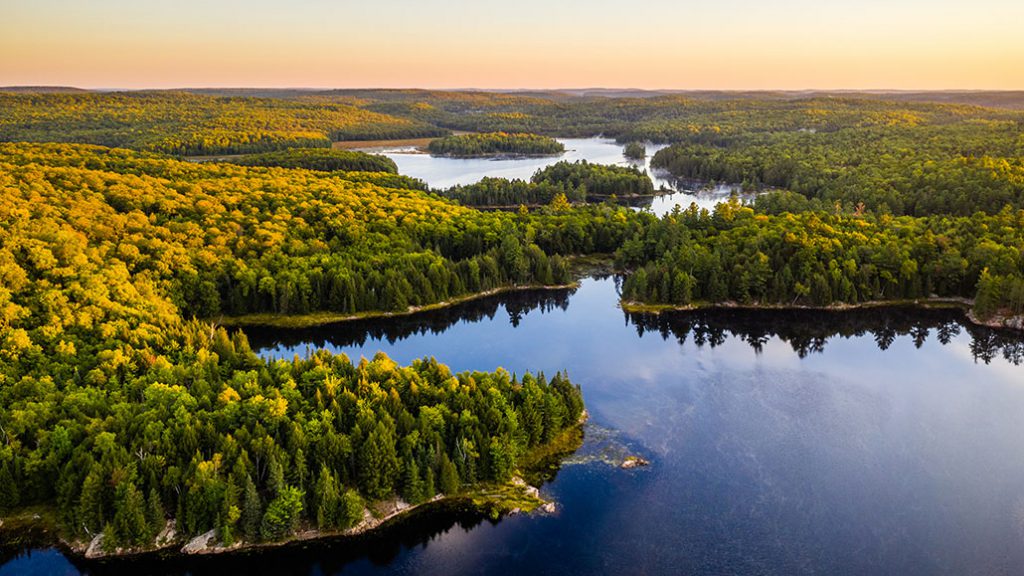New growth
ONTARIO’S 50 MILLION TREE PROGRAM

IN ONTARIO, WE have more than 70 million hectares of forest, accounting for nearly two per cent of the world’s forests and 17 per cent of Canada’s forests. This forest cover is remarkable in size. For comparison purposes the land area is equivalent in size to the landmasses of Germany, Italy, and the Netherlands combined.
In Ontario, we have an organization dedicated to making Ontario’s forests greener, Forests Ontario. Forests Ontario was formed in 2014 through the merging of the Ontario Forestry Association and Trees Ontario. Since formation, Forests Ontario has been a non-profit, registered charity whose mission is to be the voice of Ontario’s forests through supporting forest restoration, stewardship, education, and awareness.
TREE PLANTING
Forests Ontario is actively involved in education and awareness, but a large part of programming is their 50 Million Tree Program. The goal of the program is evident in its name — to plant 50 million trees across the province. To date, more than 29 million trees have been planted. Funding to make the program possible is from the Government of Canada, corporate sponsors, and donors.
While Forests Ontario runs the 50 Million Tree Program, they are not the ones planting the trees. They work with more than 80 partners to deliver the program to landowners including private tree nurseries, conservation authorities, stewardship groups, First Nations, forestry consultants, and municipalities.
One of the planting delivery agents in Ontario is the Grand River Conservation Authority (GRCA).
“As a planting delivery agent, the GRCA works with the landowner to develop the planting plans, arranging for the stock, and the planting of the trees,” says Louise Heyming, supervisor of Conservation Outreach.
Heyming notes, in other Ontario regions, groups other than conservation authorities may be the planting delivery agent of the program, such as private forestry companies.
With the help of the planting delivery agent, expertise will be given to determine suitable tree species-based on climate and site conditions, including soils, moisture, shade, field tile, and pH.
“Oftentimes the landowner will come to Forests Ontario or a conservation authority with a project vision and the planting delivery agents have the expertise to develop the plan that meets what the landowner is looking for,” says Heyming.
Projects range in size, but past projects with farmers have included tree plantings on marginal lands, in windbreaks, and along streams and rivers as riparian buffers. The purpose of this program or other tree planting programs is NOT to take primary agricultural land out of production for the planting of trees. Rather, they are designed to find ways where trees can fit with existing agricultural systems and provide win-win benefits. Farmers using trees as a windbreak to protect against wind erosion provides benefits to the farm but also a benefit to the landscape.
If you have a project idea to plant trees on your farm, or are not sure how to get started but would like advice on what to do on some marginal land or riparian’s, there are resources and expertise to help you out. To find out more information, please contact Forests Ontario directly (forestsontario.ca) or your local conservation authority to learn more about the 50 Million Tree Program or other tree planting programs offered in your area.
Michael Buttenham is the environment and sustainability coordinator for Grain Farmers of Ontario. •


























